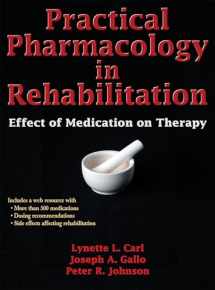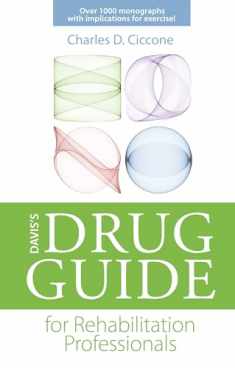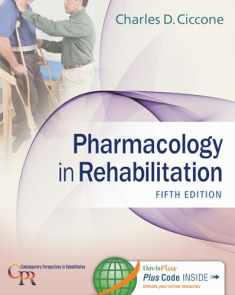
Practical Pharmacology in Rehabilitation: Effect of Medication on Therapy
Book details
Summary
Description
Practical Pharmacology in Rehabilitation: Effect of Medication on Therapy With Web Resource serves as a textbook for students and a reference book for practicing rehabilitation professionals. Rather than discussing pharmacology as it relates to only a limited segment of rehabilitation professions, this text takes an interdisciplinary approach to the effects of medications on rehabilitation patients and assists rehabilitation professionals in designing patient-specific therapy plans based on coexisting disease states.
Practical Pharmacology in Rehabilitation explains the necessary pharmacology and then focuses on the relationship between medications and the rehabilitation process. It offers a proactive approach to educating the patient and caregiver, monitoring the patient for side effects, and modifying therapy plans to provide the most effective and safe therapy for each patient. Written by a clinical pharmacist, a speech-language pathologist, and a physical therapist and athletic trainer, this unique guide helps readers in these ways:
• Optimize rehabilitation sessions with appropriately timed and dosed administration of medication.
• Understand the effects of medication on cognition and learning necessary for accomplishing the tasks of rehabilitation.
• Identify medication-associated issues affecting the rehabilitation progress, such as dysphagia and problems with muscle function.
• Work with patients, caregivers, staff, and physicians to determine appropriate interventions regarding medication use in patients.
In each chapter, Patient Cases based on the authors’ clinical experiences engage readers in understanding how medications can positively or negatively affect the rehabilitation process. Readers will need to consider the role of various medications, drug interactions, and drug intolerances on speech and language, cognition, and ADL and motor functioning as they apply concepts to determine possible solutions to each case. Throughout the text more than 100 easy-to-use tables provide quick access to information, including potential side effects affecting rehabilitation for common medications used in treatment for many conditions and other possible side effects or considerations. Expanded versions of many of these tables are offered as downloadable PDFs in the accompanying web resource. Those tables provide more complete and in-depth coverage by breaking medications down by class, indications, dosage, and potential side effects or interactions.
Practical Pharmacology in Rehabilitation begins by presenting foundational concepts necessary for understanding clinical disease states and the impact of medications used for treatment on rehabilitation. Chapters that follow are grouped by categories of clinical disease covering psychiatric and cognitive disorders, neurologic and movement disorders, chronic pain syndromes and substance abuse disorders, immune system disorders, and common chronic diseases such as diabetes, cardiac disease, thyroid and parathyroid disease, respiratory diseases, gastrointestinal diseases, and dysphagia.
Each chapter begins with a definition of the condition or special population that it focuses on. Chapters are organized to provide an overview of the pathophysiology, pharmacology, mechanism of action, dosing and monitoring for effects, drug and food interactions, side efffects and effects on rehabilitation, and the role of various rehabilitation specialists for each disease state. Summaries conclude each chapter to reinforce the important concepts covered. A glossary is included, and terms are boldfaced in the text to denote their inclusion. A medication index, an index of important terms, and an appendix with information on administering medications using iontophoresis and phonophoresis are also included.
With Practical Pharmacology in Rehabilitation, students in rehabilitation and related health care fields can gain essential knowledge to prevent adverse occurrences and medical complications and work with their patients, caregivers, pharmacists, and physicians to optimize rehabilitation and the return to daily living. For rehabilitation professionals, this essential reference provides an integrated understanding of medication use with nonpharmacologic therapies in rehabilitation patients.


We would LOVE it if you could help us and other readers by reviewing the book
Book review





